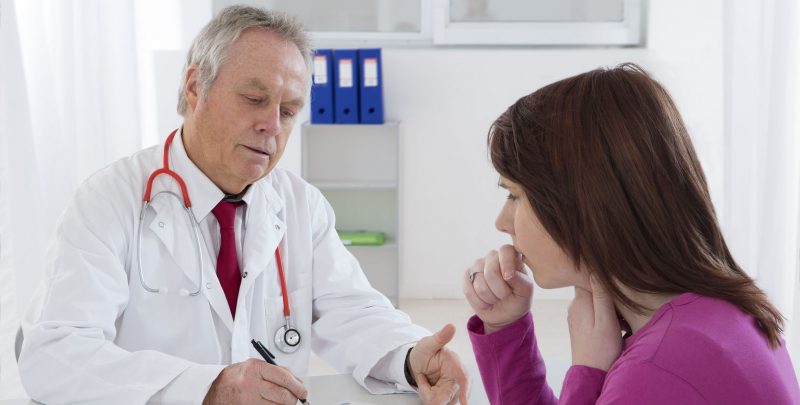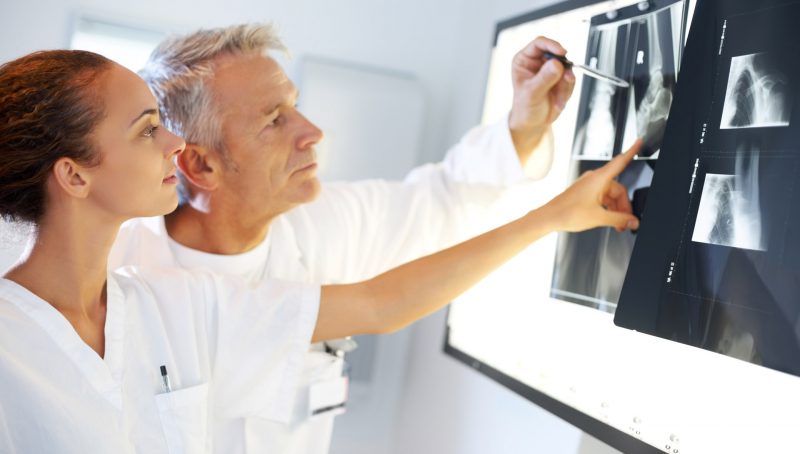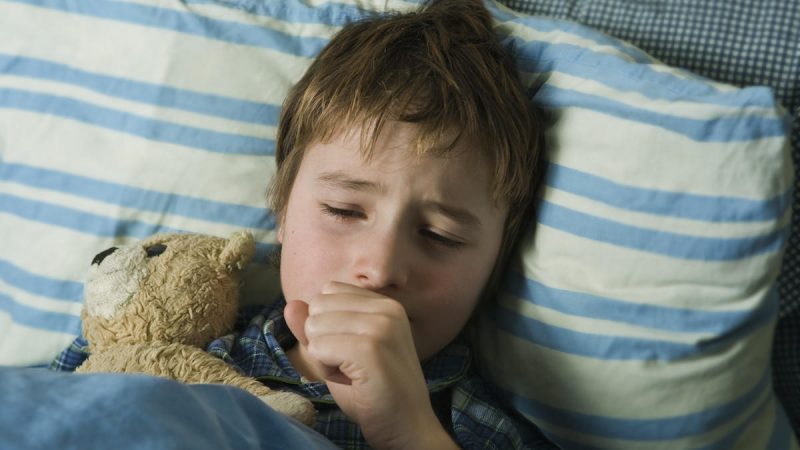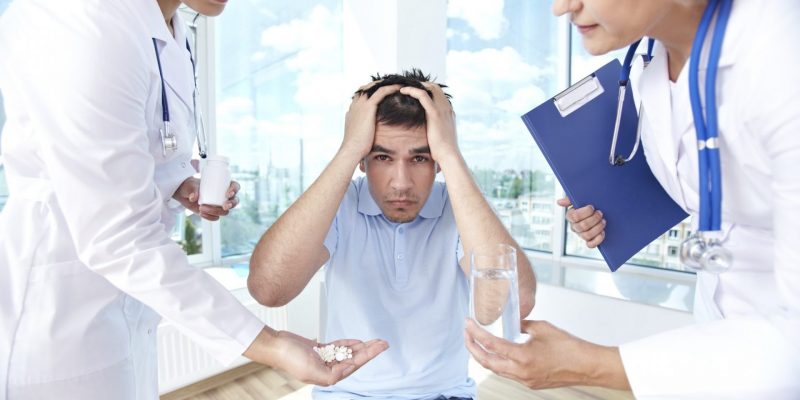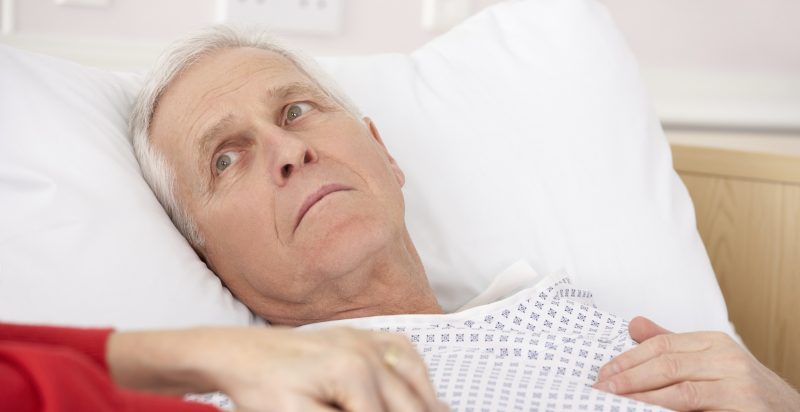The first symptoms of pneumonia are very similar to the manifestations of other respiratory diseases. But pneumonia is a life-threatening condition that can lead to a number of complications. Timely diagnosis with subsequent effective treatment will help to avoid negative consequences. Because of what pneumonia develops, how it manifests itself and what needs to be done - in this article.
Material Content:
Ways of contracting pneumonia and risk groups
Pneumonia is a disease that develops as a result of an inflammatory process in the lungs.
The infection that causes the disease is transmitted:
- by airborne droplets, while breathing, coughing, sneezing;
- through the blood.
However, only infection is not enough to localize the inflammatory process in the lungs.
Predisposing factors lead to the development of the disease in adults:
- low immune status;
- hypothermia;
- the presence of chronic diseases of the respiratory system;
- smoking;
- chemical and alcohol addiction;
- long lying (in seriously ill people);
- hormonal disorders;
- diseases of the cardiovascular system;
- surgical interventions.
Children of primary and school age often encounter pneumonia of a bacterial and viral nature.
Pneumonia in children develops as a result of such predisposing factors:
- birth injuries;
- intrauterine infections;
- hypoxia;
- asphyxia as a result of entwining the umbilical cord;
- genetic diseases;
- immunodeficiency;
- heart defects;
- chronic diseases.
In some cases, the development of pneumonia provokes a stay in a hospital hospital. So-called hospital infections can affect a weakened body.
The following categories of people are at risk of developing pneumonia of an infectious nature:
- prematurely born children;
- children under 5 years old;
- children and adults with congenital immunodeficiency;
- older people over the age of 65;
- people with COPD (chronic obstructive pulmonary disease);
- HIV infected
- AIDS patients
- patients with type 2 diabetes mellitus;
- people who have undergone radiation therapy;
- smokers
- drug addicts;
- persons suffering from alcoholism;
- bedridden patients;
- people living in regions with an unfavorable environmental situation.
Even in the absence of a predisposition to the development of pneumonia, this disease can affect a person as a result of a worsening epidemic situation. Regional outbreaks of pneumococcal infection are often observed in areas with low living standards and the lack of timely vaccination.
Types and classification of pneumonia
Pneumonia is classified according to the type of pathogen that caused the inflammatory process.
The following types are distinguished:
- viral;
- bacterial;
- fungal pneumonia.
There is a separate concept - non-infectious pneumonia. This is an inflammatory process, caused regardless of the pathogen due to exposure to toxic substances.
According to the localization of foci, pneumonia is divided into the following types:
- one-sided;
- bilateral.
In the process of diagnosis, the nature of the location and development of areas of inflammation is also revealed.
The following types are available:
- focal;
- shared;
- total;
- segmental;
- drain.
Depending on the etiology, pneumonia is distinguished:
- primary;
- secondary;
- chronic
- radiation;
- aspiration;
- traumatic.
Each individual type of disease is distinguished not only by the nature of the course, but also by features in the diagnosis. Determining the type of inflammation, etiology and severity of the course is necessary in order to build the right therapeutic course.
Signs and symptoms in adults and children
The first stage of diagnosis, in most cases, is to collect an anamnesis. Pneumonia manifests itself in a characteristic clinical picture, which differs depending on the etiology and age characteristics.
Symptoms of pneumonia in adults:
- cough (barking, dry, without sputum);
- heavy breathing, shortness of breath, feeling of lack of air;
- pain, spilled or acute, in the chest, radiating to the back;
- loss of appetite;
- weakness, drowsiness;
- muscle pain.
In childhood, the disease proceeds in a more pronounced form.
You can recognize the disease by noting the characteristic signs of pneumonia in a child:
hard breath;
- wheezing and wheezing in the chest;
- bouts of dry cough;
- heat;
- severe intoxication syndrome;
- headache;
- weakness;
- possibly loss of consciousness;
- loss of appetite.
The most common symptoms of pneumonia that are prevalent in the acute course of the disease are described. If such a clinical picture is detected, immediate hospitalization is required.
Diagnostic Methods
You can diagnose pneumonia even in the early stages of development or in situations when it occurs in a mild form without temperature. An initial examination and collection of oral complaints is the first step that determines the further course of diagnosis.
At the subsequent stages, a set of measures is carried out to clarify the diagnosis:
- Blood test (biochemistry, general analysis and indicators of gas composition).
- Bacteriological research.
- Microscopic examination of sputum.
- X-ray.
- CT scan.
- Biopsy (in rare cases).
- Thoracotomy (rarely).
- Cystological examination.
Based on the diagnostic results, the doctor decides on a further therapeutic course.
Important! If there is a history of other diseases, additional diagnostic measures may be required. Urinalysis, a blood test for the presence of antibodies of a specific nature, bronchoscopy and other techniques are additionally prescribed according to the results of basic studies.
How to treat pneumonia
In most cases, pneumonia is treated conservatively. The individual course of pharmacotherapy is selected individually, and in addition physiotherapeutic techniques are prescribed for the quick recovery of the body.
The course of treatment of pneumonia consists of the following measures:
- antibiotic therapy;
- the appointment of symptomatic drugs;
- taking corticosteroids;
- UV therapy
- ozone therapy;
- paraffin therapy;
- therapeutic massage;
- Exercise therapy.
Surgical treatment is indicated in rare cases with aspiration pneumonia (to remove a foreign body), in the case of pneumothorax and other dangerous complications.
Attention! A good reason for the use of surgical intervention is a frequent, recurring focal pneumonia that does not change localization. The operation is performed in the absence of contraindications after stabilization of the patient's condition.
Possible complications of pneumonia
The prognosis of the course of the disease cannot be universal.
The effectiveness of treatment and the speed of recovery depend on the following factors:
- age;
- the state of the immune system;
- type of pneumonia;
- type of pathogen;
- the adequacy of the therapeutic course.
A disease can lead to negative consequences, even death, if timely measures are not taken. The most dangerous cases of purulent pneumonia, which leads to a high mortality rate in the absence of effective antibacterial and supportive therapy.
Complications of pneumonia include the following diseases and pathologies:
- scarring and degeneration of lung tissue;
- inflammation of the heart membrane;
- purulent abscesses;
- pleurisy;
- pulmonary edema;
- meningitis;
- obstruction;
- lung gangrene.
Timely treatment is not always able to prevent the development of negative consequences, but significantly reduces the risk of pathological complications and death.
Important! Particularly dangerous is the combination of pneumonia with immunodeficiencies and oncological diseases - such cases require long treatment and rehabilitation, more often ending in the development of complications. No less dangerous is the development of pneumonia in children under 1 year old. Their treatment until complete recovery should be carried out in a hospital.
Preventive measures
Since various pathogens, such as viruses and bacteria, can cause the disease, there is no universal vaccination against pneumonia. But to date, a vaccine against the most common and dangerous type of pneumonia has been developed and is successfully used. The drug creates immunity to pneumococcal infection. To prevent the disease, it is necessary to vaccinate and revaccinate according to the vaccination schedule.
In addition, you need to follow a few simple rules:
- wash hands regularly;
- get rid of bad habits and addictions;
- eat well;
- avoid hypothermia;
- Do not contact sick people;
- avoid stress.
Pneumonia is a treatable but serious illness. Self-diagnosis and treatment at home is unacceptable - this can turn into tragic consequences. If you find the first signs, you must immediately seek medical help or call a team of "ambulance".


